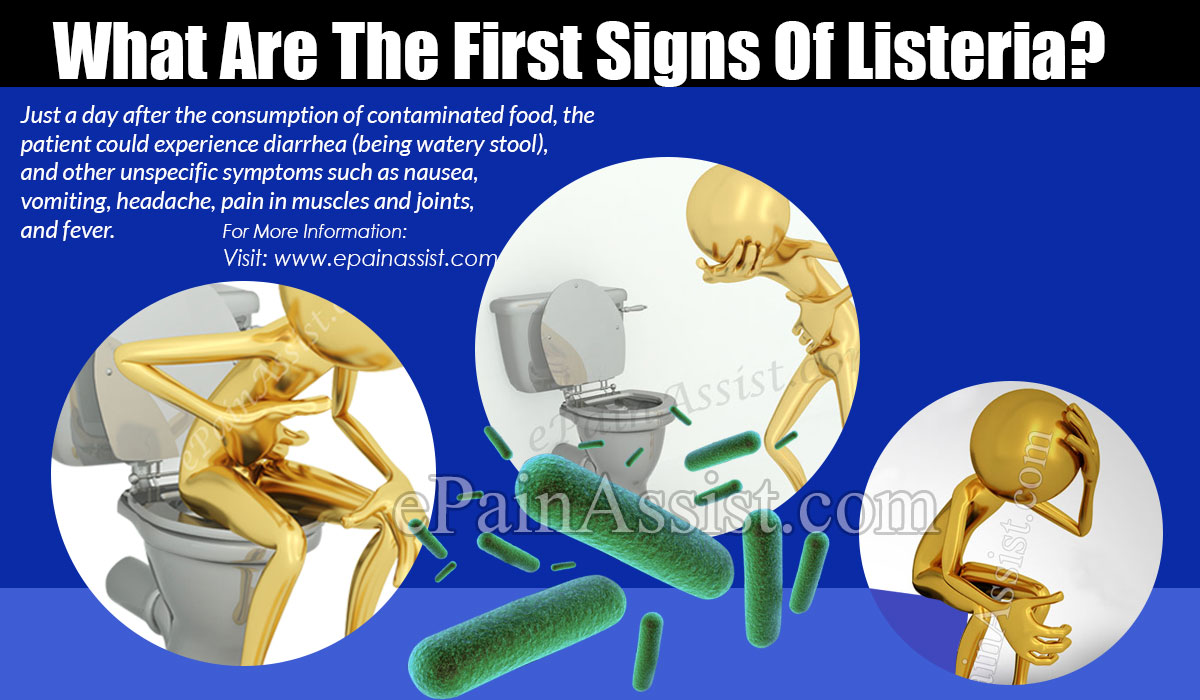Listeria monocytogenes is a bacterium that can cause very serious invasive infections in humans and animals and survive without difficulty in inanimate environments, adapting quickly and efficiently to extreme changes in environmental conditions, which explains its great capacity for transmission.

What Are The First Signs Of Listeria?
There are several clinical forms of listeriosis, which is caused by listeria. The most frequent is the one involving the gastrointestinal system. Just a day after the consumption of contaminated food, the patient could experience diarrhea (being watery stool), and other unspecific symptoms such as nausea, vomiting, headache, pain in muscles and joints, and fever.
Clinical Forms of Listeriosis
Non-invasive gastrointestinal listeriosis is the most common clinical form. It is apparently an infrequent cause (<1% of cases) of sporadic febrile diarrhea.
In recent years it has gained notoriety for causing outbreaks of food poisoning of some importance throughout the world.
The inoculum necessary to cause disease varies considerably depending on the strain and the host’s situation, although immunocompetent people usually need it higher. Approximately 24 hours (range between 6 and 240 hours) after ingestion of contaminated food, patients either become asymptomatic carriers or suffer from watery stools, nausea, vomiting, headache, arthromyalgia (pain in muscles and joints) and fever, symptoms that usually limit in two days, unless they suffer some type of immunosuppression.
Invasive Listeriosis: Gestational and Neonatal disease
In pregnant women who experience a relative physiological immunocompromise and in which other known risk factors for listeriosis are not usually detected, the most frequent form of presentation is fever without apparent focus and with few accompanying symptoms. The majority experience -between 2 and 6 weeks after infection- a bacteremia that usually has a mild flu-like syndrome, with fever, chills, arthromyalgia, low back pain, cough, headache, dizziness or gastrointestinal symptoms (any combination or only one of these symptoms and signs). It usually resolves spontaneously unless it causes amnionitis. Meningitis is very rare. The severity of maternal listeriosis lies in that-especially in the third trimester and even more so, if pregnancy is multiple-usually follows: abortion, intrauterine fetal death, a higher rate of cesareans, prematurity, sepsis, and neonatal death.
It is essential to perform blood cultures for all pregnant women with fever. Neonates can acquire an intrauterine infection or intrapartum and suffer from sepsis, microabscesses and disseminated granulomas (infantoseptic granulomatosis), respiratory infection or meningitis, which are detected at birth or between days and weeks later, and which entail significant mortality and morbidity, with persistent hydrocephalus being frequent in the case of meningitis. Prematurity is the main risk factor. Pediatric listeriosis, not perinatal, is infrequent and it usually has a better prognosis.
Bacteremia Can Be a Sign of Listeria Infection
In some series, the most frequent clinical form in immunocompromised patients is bacteremia without an identifiable focus, which presents with fever, rapid deterioration and often fulminating. The fact that it is more frequent than meningitis may be explained by the rapid empirical therapeutic intervention in these patients before the detection of fever and with it the limitation of the spread of the microorganism.
Another Sign of Listeria Infection Can be Central Nervous System Infection
Patients may have meningitis, meningoencephalitis or cerebritis. Cerebral involvement is capricious, supra or infratentorial, diffuse or localized, forming abscesses. Infection of the central nervous system, in general, is less frequent in pregnant women and patients with hematological tumors or with bone marrow transplantation.
Meningoencephalitis affects neonates (early perinatal period), adults over 60 and immunosuppressed, although 30% of patients have no identifiable underlying factors. The clinical spectrum ranges from a subtle picture with fever and cognitive changes to the fulminating course and coma. The diagnosis can be delayed since more than 40% of patients do not have meningeal signs in the presentation that is usually more atypical and insidious than in other bacterial meningitis. In the cerebrospinal fluid, there may be a predominance of polymorphonuclear or mononuclear in subacute forms.
Endocarditis Can Be a Sign of Listeria Infection
It is a rare and serious complication of Listeria bacteremia; having described less than 100 cases worldwide with a variable mortality, previously around 50%, and that current can be around 12%.
It frequently generates valvular dysfunction and cardiac insufficiency. However, many cases are solved exclusively with antibiotic therapy, even those that settle on a prosthetic valve, without requiring surgery.
- Centers for Disease Control and Prevention. (2021). Listeria (Listeriosis). https://www.cdc.gov/listeria/index.html
- European Food Safety Authority. (2019). Scientific opinion on the maintenance of the list of QPS biological agents intentionally added to food and feed. https://www.efsa.europa.eu/en/efsajournal/pub/5555
- Charlier, C., et al. (2017). Clinical features and prognostic factors of listeriosis: the MONALISA national prospective cohort study. The Lancet Infectious Diseases, 17(5), 510-519.
Also Read:
